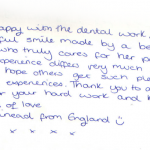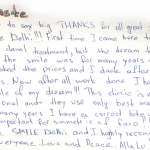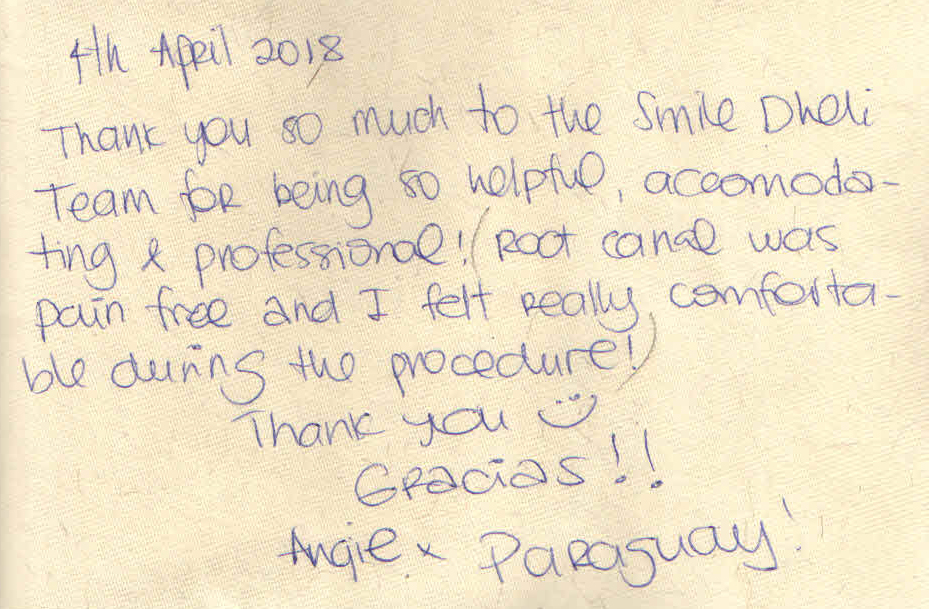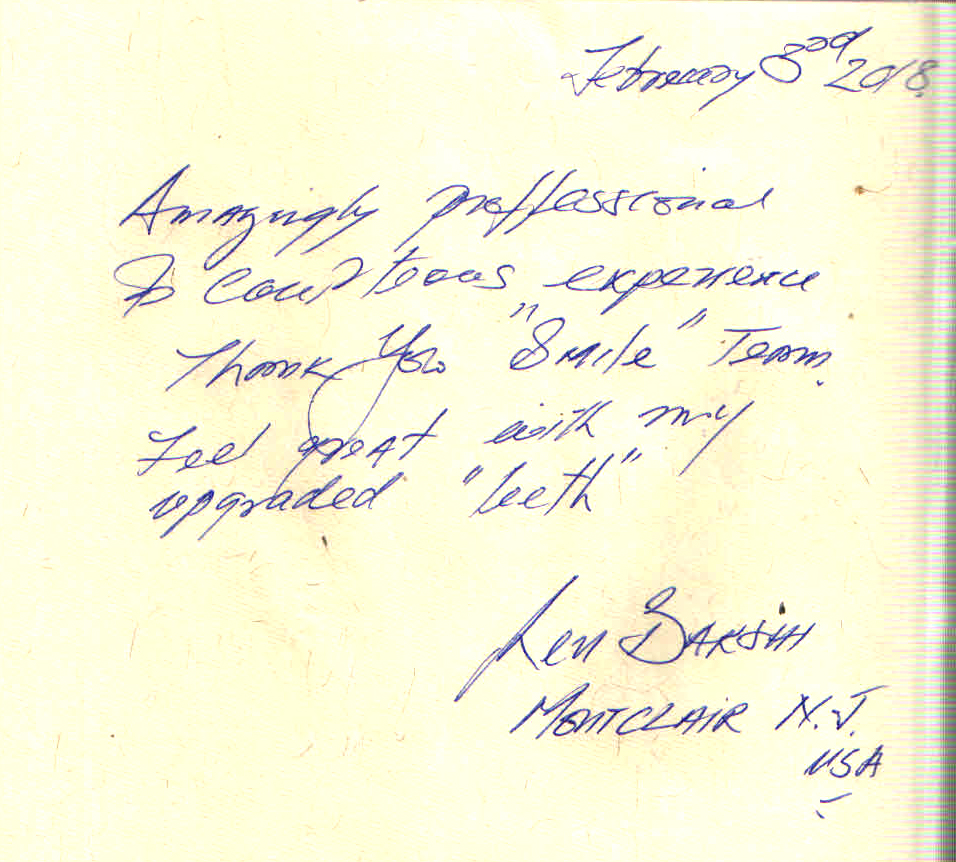Do you have crooked teeth?
Properly aligned teeth provide support for each other and for the entire mouth, making normal daily activities, such as chewing and speaking possible.
The jaw is designed to have teeth that, when the jaw is closed, align against each other fairly well. This keeps teeth healthy and encourages proper dental health.
When teeth are not properly aligned, they can cause a myriad of problems.
If you have some teeth that are out of alignment, they can cause problems, especially in your jaw joint and in your mouth’s overall health. Because crowded teeth can catch and hide particles of food, they are more likely to get cavities and eventually, decay and cause further problems with the gums. They can even make it difficult to chew food properly or cause you to break a tooth.
Crooked teeth, however, do not provide sufficient support and can cause jaw and muscle strain, leaving the mouth vulnerable to injury. People who have crooked teeth may also suffer from tooth pain or sensitivity.
It is really never too late to have your teeth straightened and today there are numerous options for more convenient, faster and effective treatments.
When left untreated, crooked teeth can often lead to periodontal disease and premature wear on your enamel.
The dentists in dental clinics in Delhi and dental clinics in India have trained themselves to keep abreast with the latest techniques of dentistry and therefore, treating crooked or crowded teeth into the correct positions and alignment.
Causes of crooked teeth
Having crooked teeth may seem primarily like a cosmetic problem, but in reality, they are caused by genetics or by our own actions.
Crooked teeth stem from a number of different sources. These may be genetic, or they may be a result of the way that we live or care for our teeth. Here are some of the most common underlying causes for crooked teeth:
1. Sucking your thumb. Because this habit is most often practiced by young children, it’s no wonder that it takes a serious toll on the teeth as they grow in. Sucking on your thumb for hours a day can pull your teeth forward and out of alignment and may be one of the leading causes of “buck teeth.”
2. Repeatedly pressing the tongue against the teeth or not using it properly during talking or eating. The tongue is a powerful muscle—one of the most active and strongest in the body and it can press and move teeth, especially in the early years, as they are just growing in. This can push your teeth out of alignment before they ever get a chance to grow in properly. If the tongue pushes unduly against the teeth or the individual has a hard time forming letters properly or trusts the tongues against the teeth to help with swallowing, these behaviors can affect teeth’s crookedness.
3. Losing baby teeth early. Most baby teeth fall out just before the adult tooth is ready to grow in. This allows the adult tooth to grow into the right spot and usually in the right position. However, many people will lose their baby teeth far before the adult teeth are completely ready to grow in. This means that the adult teeth may drift in the gums and end up not growing properly into their spot.
4. Extra adult teeth. While most people top out at thirty-two teeth, some people are born with or develop extra teeth. Aside from wisdom teeth, which may grow in at the back of the jaw during the adolescent years, there may be a few too many teeth trying to grow into the jaw. The result is crowded, crooked teeth, as they all trying to find their place.
5. Not enough teeth. By that same function of genetics, some people may be born with not enough teeth. This will leave gaps in the jaw, which can cause other teeth to be pushed out of alignment (because there is room to roam).
6. Extra large teeth. Even if jaw continues to grow after adult teeth all come in, it may be too late for the adult teeth to grow in straight. If heredity has dictated large teeth, there may just never been enough room for all of those big teeth in the jaw.
7. Small jaw. As with having large teeth, having a small jaw may just be inherent in your genes, as is having a narrow bite or a large one. If you have a small jaw, even normal-sized adult teeth may have difficulty growing into the proper alignment.
Treatment options
If your teeth are crooked, you have basically four different options in regards to straightening them. All four work very well. Some take several months to deliver their magic while some can “straighten” your teeth almost immediately.
Treatment options are more varied now than ever. Conditions that were not possible to be treated can now be treated.
Dental clinics in Delhi are routinely treating crooked teeth with the following methods helping you to achieve straight, healthy teeth and a more attractive smile.
1. Dental Implants
Dental implants can replace extremely crooked or missing teeth.
These are implants that act as replacements for your tooth roots. Your dentist removes your tooth and its root, implanting a strong foundation/root into your jaw, and then fixing a permanent replacement tooth upon the implant, which is made to look like and act just like your natural tooth. Speech with them is just like natural teeth.
2. Orthodontic braces
The advantage of orthodontics as part of an aesthetic treatment is that it minimises any changes to the existing teeth. .The most common treatment for crooked teeth is, undoubtedly, braces. They are the most popular and effective option for the widest range of people because braces can be customized to help even those with severe misalignments.
There are many orthodontic treatment options today to have your teeth straightened in convenient, fast and effective ways.
Types of braces
Clear and Traditional Braces
Visible braces are fixed on the front of the teeth. These braces are what most people think of when they hear the word “braces”.
They’re also ideal for fixing serious alignment problems and gaps.
There are multiple types of visible braces. Most braces include metal wires, but the brackets vary widely: brackets can be made from plastic or tooth-colored ceramic
Lingual Braces
Lingual braces are metal braces applied out-of-sight, behind the teeth. They are almost impossible to see, even up close. Lingual braces make it tougher to keep teeth clean and to talk at first. But to patients who are adamant about indiscernible tooth straightening, they are a good option. They have the huge advantage of being hidden from view and therefore are not visible in the smile.
Clear Ceramic Braces
Another almost invisible alternative is clear ceramic or tooth-colored braces which look more like a retainer, although many people won’t notice them at all, even from a couple of feet away. The wire is still silver but the brackets and ligatures are clear or tooth-colored, so they aren’t noticeable. They can stain with foods such as curry or with black coffee, but they are changed out frequently, so that’s not a big concern. Many patients simply avoid those foods while wearing ceramic braces.
3. Invisalign
Invisalign are an increasingly popular method of treatment. A great way to have orthodontic treatment without anyone knowing.
This tooth straightening procedure uses “a series of aligners” that are custom-fitted for your mouth. They are trays that are made of smooth and comfy and pretty much invisible plastic that fit over your teeth. There are no wires or metal brackets to tighten. The aligners gently and gradually move the teeth to the proper alignment and straighten your teeth. You have to use a new one every two weeks or so over several months until your treatment get complete.
You must wear the aligners almost all of the time, removing them only to eat and drink (unless you are drinking water), and then placing them back into your mouth once the meal or snack is over making eating and dental hygiene easier.
Those who prefer an even more convenient and discreet treatment may choose the Invisalign system of aligner trays.
However it is particularly important to have a consultation with an orthodontist to discuss your objectives.
4. Porcelain Veneers
These are very thin shells made of ceramic that look incredibly like your natural teeth. Your dentist bonds a veneer to the front surface of a tooth, immediately transforming its color and shape. Your dentist bonds the veneer securely to the tooth, allowing you to eat and chew just about any food your natural teeth could. People noticing your teeth won’t notice that the veneer is even there.
One or more veneers can be placed on your teeth in just two visits with your dentist. They are a great way to get a beautiful smile almost instantly.
Using veneers to straighten teeth can sometimes result in bulky uncomfortable restorations as well as extensive preparation of otherwise healthy teeth.
Dentist in Delhi especially in reputed dental clinics in Delhi, like ‘Smile Delhi – The Dental Clinic’, are doing high end dental treatments like, Invisalign, dental implants, orthodontic treatments and smile makeovers etc with great proficiency.
Many patients are surprised to discover that they can improve their smile such options. Correcting the alignment of your teeth not only optimises the bite and functional arrangement of your teeth, but also facilitates easier brushing and flossing, helping you to keep your teeth healthy.
Posted By – Dr. Shriya





























































